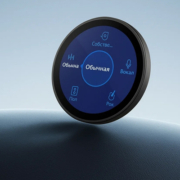How Does the Brilliant Plug-In Smart Home Control Panel Compare to Using an iPad or Similar Device to Control Smart Home Devices?
Smart home control has become more versatile than ever, with multiple ways to manage lighting, HVAC, security, and entertainment. Two common approaches are dedicated smart home panels—like the Brilliant Plug-In Control Panel—and general-purpose devices such as iPads or other tablets. While both options enable smart home management, they offer very different user experiences. Let’s compare their strengths and weaknesses.
1. Design and Installation
- Brilliant Plug-In Smart Home Control Panel:
Purpose-built for home automation, it’s designed to be mounted on walls with a permanent power supply. This ensures that it’s always on, always available, and seamlessly integrated into your home’s infrastructure. - iPad or Similar Tablets:
While portable, tablets are not designed for fixed installation. They require stands, chargers, or wall mounts that feel less professional. They may also run out of battery if not connected to power.
Winner: Dedicated control panels — always accessible and designed for the wall.
2. User Experience
- Brilliant Panel:
Features a simplified, touch-friendly interface optimized for quick access to smart devices. Some models also support voice assistants like Alexa and Google Assistant. - iPad/Tablets:
Offer flexibility, as you can install any smart home app (Tuya, Home Assistant, Apple Home, etc.). However, navigating between multiple apps can feel less unified compared to a dedicated control panel.
Winner: Depends on preference — panels for streamlined control, tablets for app diversity.
3. Connectivity and Integration
- Brilliant Panel:
Integrates directly with lighting, switches, thermostats, and popular ecosystems. It’s built to replace or complement traditional wall switches. - iPad/Tablets:
Rely on Wi-Fi or Bluetooth apps. They may lack deep hardware integration with wall switches, KNX, RS485, or Modbus systems.
Winner: Dedicated panels — more reliable for integration with wired smart home systems.
4. Long-Term Value
- Brilliant Panel:
Built for 24/7 operation with stable performance, firmware updates, and dedicated support. - iPad/Tablets:
Great multipurpose devices, but may wear out faster under constant use. Replacing a tablet every few years can add up, and they’re not optimized for continuous operation.
Winner: Panels — designed for durability and long-term reliability.
5. Cost Consideration
- Brilliant Panel:
Initial investment may be higher, but it provides professional-grade integration and permanence. - Tablets:
Can be cost-effective if you already own one, but add-ons like mounts and chargers reduce the price advantage.
Portworld’s Alternative: Professional Android Smart Panels
For those considering a Brilliant panel or iPad, Portworld’s YC-SM series offers the best of both worlds:
- Android-based flexibility: Install apps like Tuya, Home Assistant, or KNX clients.
- Wall-mounted design: Always powered, sleek integration with 86-type boxes.
- Multiple sizes: 5.5-inch (YC-SM55P), 8-inch (YC-SM08P/YC-SM08M), and 10-inch (YC-SM10P).
- Connectivity: PoE, Wi-Fi, RS485, KNX, and Zigbee support for both wireless and wired systems.
- OEM/ODM customization: Branding, software integration, and multilingual support for global markets.
While iPads and tablets provide flexibility for smart home control, they fall short in reliability, integration, and permanence. Dedicated solutions like the Brilliant Plug-In Smart Home Control Panel—and even more so, Portworld’s Android-based control panels—deliver a seamless, always-on experience tailored for smart living.





